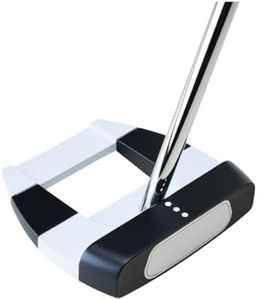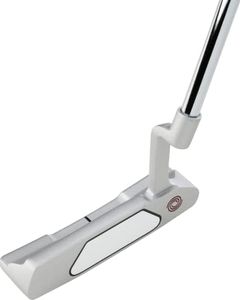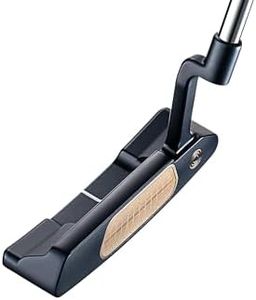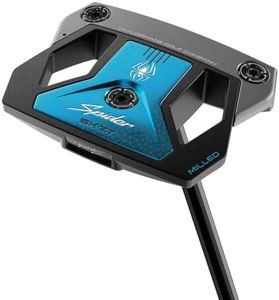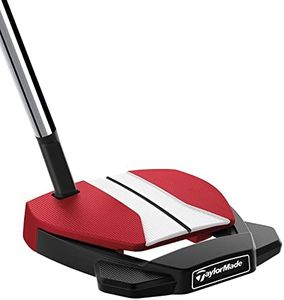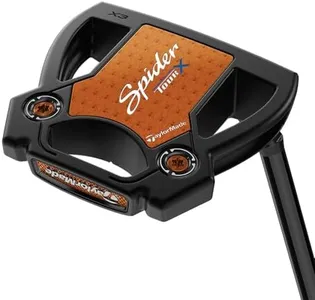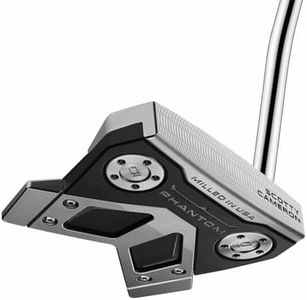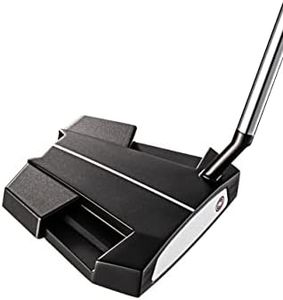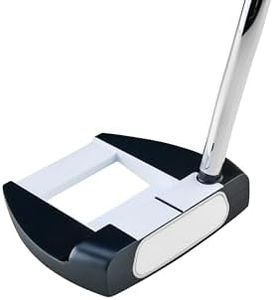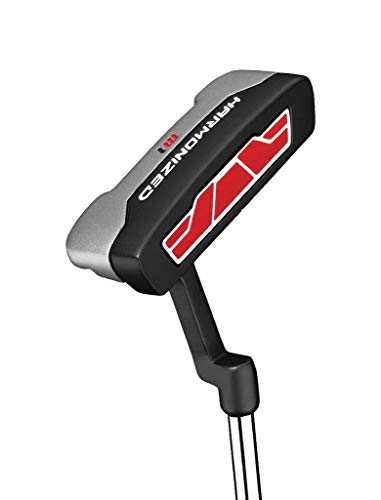We Use CookiesWe use cookies to enhance the security, performance,
functionality and for analytical and promotional activities. By continuing to browse this site you
are agreeing to our privacy policy
10 Best Putters
From leading brands and best sellers available on the web.By clicking on a link to a third party's website, log data is shared with that third party.
Buying Guide for the Best Putters
Choosing the right putter is all about matching the club to your natural putting stroke, preferences, and comfort. Since so much of putting is about feel and confidence, it's important to look at the putter’s features and test different options to see what works for you. The key specs for putters are designed to help you find something that feels comfortable, fits your setup and swing, and helps you line up putts more effectively.Putter Head TypeThe putter head type refers to the shape and design of the putter’s head, which can primarily be blade, mallet, or a hybrid shape. This spec is important because it affects forgiveness, alignment, and overall feel. Blade putters are traditional, compact, and suit players with straight-back and straight-through strokes, offering great feedback. Mallet putters are larger, provide more forgiveness on mis-hits, and often feature visual alignment aids, making them ideal for players who like stability and need help with straight aiming. Hybrid putters blend features from both. Try each type to see which helps you aim better and feels more stable and comfortable during your stroke.
Putter LengthThe length of a putter is the measurement from the top of the grip to the bottom of the head. It’s crucial because it directly impacts your setup, posture, and eye alignment over the ball. Standard lengths range from 33 to 35 inches, with longer or shorter options for unique setups. Shorter putters promote a more compact posture and may work well for players who like to bend more over the ball, while longer putters promote a more upright stance. To choose the right one, check your natural setup: you want your eyes over the ball and your arms hanging comfortably. The correct length will help you consistently get into that position.
Putter WeightPutter weight refers to the overall heaviness of the putter, usually measured in grams. This matters because it affects swing feel and stroke tempo. Lighter putters encourage a quicker stroke, which may suit fast greens or players with a quick tempo, while heavier putters slow down your stroke and provide more stability, useful on slower greens or for those with shaky hands. Get a feel for both ends of the spectrum and see which weight gives you the most control and comfort during your putting motion.
Putter Face TypeThe face type is about the material and design of the putter face where the ball makes contact. Options include milled faces (machined metal for a firm feel), insert faces (softer synthetic or composite materials), or groove patterns (designed to get the ball rolling smoothly). This spec is important as it changes the feedback, sound, and feel at impact, which can help or hinder your distance control. Choose a firmer face if you like crisp, solid feedback or putt on slower greens; softer faces can help if you prefer a muted feel or putt on faster greens. Testing different faces will tell you which matches your touch best.
Alignment AidsAlignment aids are visual cues or markings on the top of the putter to help you aim more accurately. Their importance lies in making sure you set up square to your target line, which can greatly improve consistency. Simpler aids (like a single line) suit golfers who want minimal distractions, while more elaborate designs (multiple lines, shapes or contrasting colors) can help those who struggle to line up or prefer a visual guide. Try putters with various alignment aids and pick the one that helps you feel most confident when aiming at your target.
Grip StyleGrip style refers to the thickness, shape, and texture of the putter grip. This affects your comfort and control during the stroke. Thin grips allow more wrist action, while thicker or oversized grips limit wrist movement and promote a more stable stroke. Choosing comes down to your grip style and personal comfort: if you find your wrists break down or you struggle with yips, a thicker grip can help smooth out your motion. Try different grip thicknesses to see which allows you to maintain the most stable and relaxed stroke.
